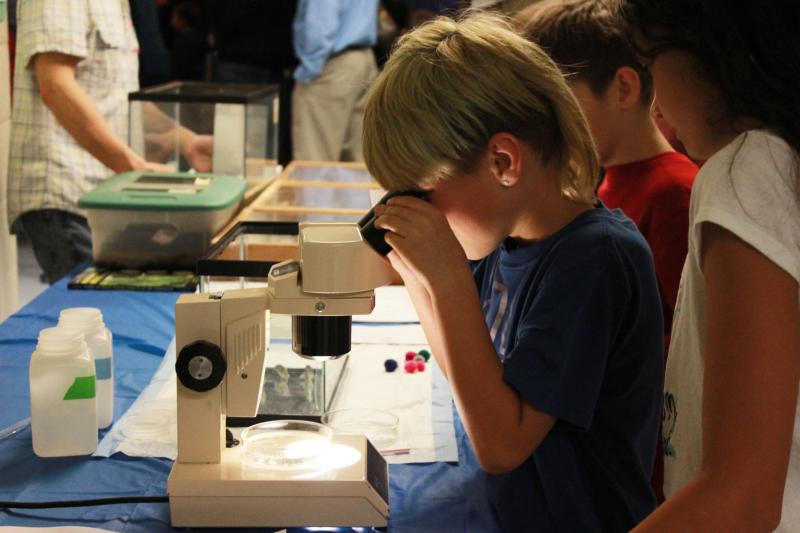Students explore their creativity and curiosity during STEAM night
The line to make ice cream was almost out the door of an entrance to the John W. Decas Elementary school.
But it wasn't the only crowded place in at school's Wednesday night Science Technology Engineering Art and Math (STEAM) event. Students and parents alike got to use microscopes focused on frog eggs were set up in the hallway, and play with wind-powered cars.
The STEAM program provides hands-on learning about science, technology, engineering, arts, and math for students.
Those who hosted the event didn't know the night would be such a success, especially since it was the first STEAM night at the elementary school.
"We wanted to give students the chance to show their families the things they've been doing," said Melissa Dionne, the school's STEAM specialist.
Dionne said she spent a few months putting the night together, which she said would not have been possible without volunteers at each station. Teachers and high school students took their time to help out and direct children.
Some activities were new, and larger than the projects the children have been working on in school. One such project, called the News Tubes, had students roll up newspaper and work in groups to design structures they could fit inside.
Others were older projects that students had already done in class, like thaumatropes- optical illusions, images created by turning two images into one.
The Wareham Land Trust also had a booth to teach students about vernal pools. Vernal pools are bodies of water created during the winter and spring, and dry up at the beginning of summer. In the springtime, many organisms lay their eggs and raise their young in the pools. On display at the booth were three examples of these organisms: a green frog with its eggs; the eggs of a spotted salamander; and fairy shrimp.
Students were also able to see a collection of precious rocks and gems, as well as a collection of insect specimens brought by members of the Smithers Laboratory.















